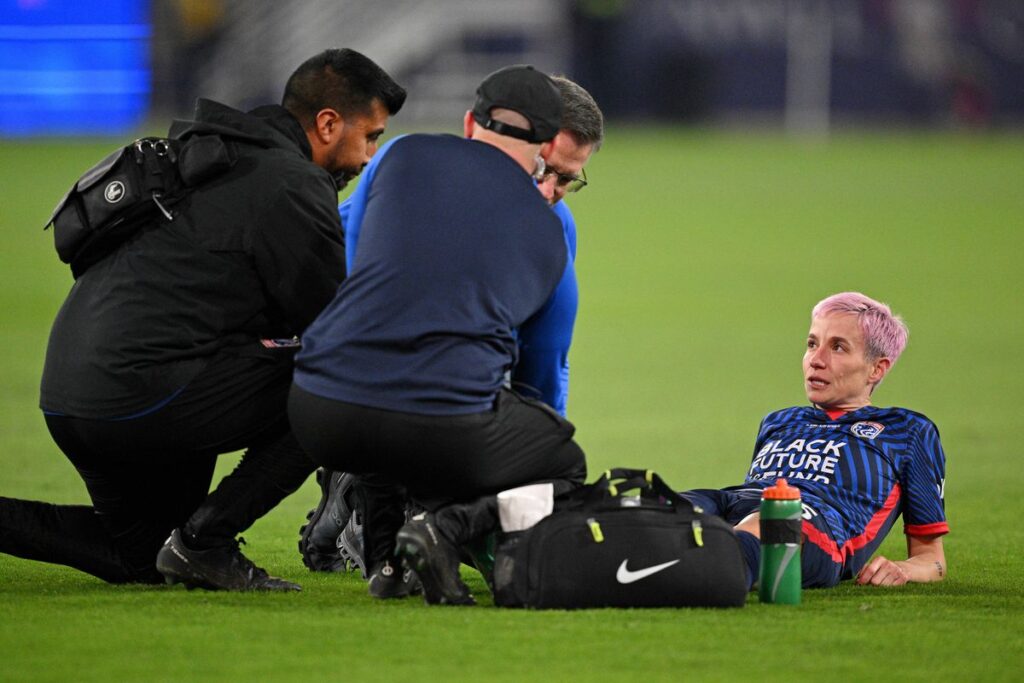A new academic study focused on understanding the connection between menstrual cycles and ACL injuries in female athletes offers fresh hope for reducing the incidence of these debilitating injuries. This research aims to fill a long-overdue gap in knowledge surrounding the influence of hormonal fluctuations on the risk of anterior cruciate ligament (ACL) tears, which have long plagued women in sports like football.
The study, set to begin in June at Kingston University in London, will involve analyzing hormone levels from blood samples collected from 20 to 25 adult female football players aged between 18 and 35. Researchers will assess how these hormonal variations throughout the menstrual cycle correlate with players’ performance in specific movement tests known to be linked to ACL injury risk, such as change-of-direction maneuvers and landing mechanics. By doing this, the team hopes to better understand how fluctuations in hormone concentrations might affect ligament laxity and neuromuscular control key factors believed to influence injury susceptibility.
ACL injuries have been a prominent issue in women’s football for decades but have gained heightened attention recently due to high-profile cases. For example, some of the world’s best players have suffered ACL tears, sidelining them during major tournaments and highlighting the need for targeted prevention strategies. Beyond headline cases, ACL injuries are widespread; in some top leagues, multiple players are sidelined at any given time due to these injuries.
Experts caution that completely eliminating ACL injuries is unlikely, as some incidents result from unavoidable external factors such as bad tackles or unfortunate positioning. However, many ACL injuries occur without external contact during actions like rapid direction changes or awkward landings when a player is slightly off-balance. These non-contact injuries are believed to be more preventable with the right understanding and interventions.
The goal of this research is to develop a holistic understanding of the biomechanical and physiological demands placed on female athletes during these vulnerable movements and how these demands interact with fluctuating hormone levels. This understanding could lead to improved injury prevention approaches such as refined strength and conditioning programs, optimized load management, and coaching techniques tailored to the menstrual cycle.
One significant challenge lies in the wide variability of menstrual cycles and hormone profiles among female athletes. While the average cycle length is often cited as 28 days, real-life cycles can vary substantially between individuals, and even within the same individual over time. Moreover, many athletes use different types of contraceptives that alter hormone levels in varying ways, adding another layer of complexity to understanding risk patterns.
Because of this variability, the research team emphasizes the importance of individualized profiling rather than applying a one-size-fits-all model. By mapping out each athlete’s unique hormone fluctuations and corresponding functional performance, the study aims to identify personalized risk windows and inform targeted interventions.
The findings from this project will be submitted to the sport’s global governing body next year. The support and funding provided for this study represent a meaningful step forward for the women’s game, reflecting a growing commitment to addressing sex-specific issues in sports medicine. Previous research on the link between menstrual cycles and ACL injuries has been limited or poorly executed, so this study aims to set a higher standard through rigorous methodology and comprehensive analysis.
While this study is only one piece of a much larger puzzle, its insights could contribute significantly to lowering the rates of ACL injuries in female footballers over time. Researchers acknowledge that injury risk is influenced by multiple interacting factors, and hormonal cycles are just one aspect. However, by combining hormonal data with biomechanical performance and neuromuscular assessments, the project hopes to unlock new avenues for reducing injury risk and supporting the health and longevity of female athletes’ careers.
Ultimately, this research highlights the importance of understanding and respecting the biological differences in female athletes. As awareness grows, the sports community may develop more effective, individualized prevention strategies, reducing the burden of ACL injuries and allowing more women to play at their highest potential for longer.

